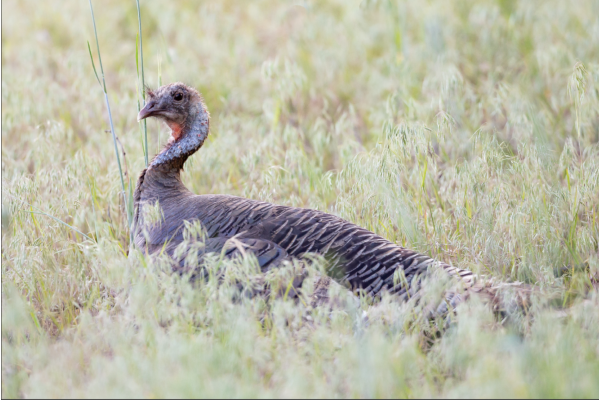EDGEFIELD, S.C. — A new research project in Texas, funded in part through the NWTF’s 2025 investment in wild turkey research, seeks to investigate the season-specific survival rates of female Rio Grande wild turkeys, giving biologists a clearer picture of how to keep these iconic birds thriving on the landscape.
The research project is both collecting new data and utilizing data collected over the past decade on Rio Grande wild turkeys across diverse ecoregions in Texas.
Between 2016 and 2025, more than 700 female Rio Grande wild turkeys were captured and fitted with leg bands and GPS-VHF backpack transmitters using drop-nets and walk-in traps. Currently, there are over 20 birds with active transmitters on the landscape, and project investigators plan to deploy more solar transmitter units this year to collect new data.
“A very cool aspect of this project is that this is one of the longest-running wild turkey data sets in Texas,” said Nicholas Bakner, Ph.D., project lead and postdoctoral researcher at the University of Delaware. “The data was collected from over 775 female wild turkeys by the Texas Parks and Wildlife Department and was only used for a few master’s projects looking at smaller-scale things like precipitation and survival. Looking at resource selection, like what we’re looking to do, has not yet been scratched.”
Using the GPS tracking data and state-specific reproductive timing, Bakner and his team will assign individual females to five seasonal life-cycle stages: pre-laying, laying, incubation, brooding and post-reproduction and then evaluate mortality within each stage. Researchers are curious to see what periods during the female’s life cycle are associated with the highest mortality risk. Project results will help evaluate how landscape characteristics and habitat management practices influence survival during those high-risk periods.
“The idea behind this project is to identify these critical periods and link that to the resources on the landscape,” Bakner said. “We want to identify the critical habitats to make management recommendations that are more fine-scale to the turkey’s actual survival, as well as increasing productivity on the landscape.”
This research will allow for the integration of more private landowners in wild turkey habitat management by providing the science behind it.
“It’s so great that the NWTF funded this,” Bakner said. “Without it, we couldn’t get this project off the ground. Rio Grande wild turkeys are a subspecies that are so sought after in Texas. This project is just a steppingstone towards seeing how these populations are doing and what’s driving decline in some areas versus what’s supporting survival in others.”
The research team hopes to produce results by winter 2026, followed by statistical analysis of the captured data.
The NWTF invested funds into the above project along with eight other wild turkey research projects across the United States, totaling $503,618, for the organization’s 2025 research investment. Since 2022, the NWTF and its partners have combined to put more than $22 million toward wild turkey research.
Thanks to support from dedicated volunteers and partners — such as the Bass Pro Shops and Cabela’s Outdoor Fund and NWTF state chapters — the NWTF’s RFP Program is an aggressive, annual effort to fund critical wild turkey research projects nationwide.
About the National Wild Turkey Federation
Since 1973, the National Wild Turkey Federation has invested over half a billion dollars into wildlife conservation and has positively impacted over 24 million acres of critical wildlife habitat. The NWTF has also invested over $10 million into wild turkey research to guide the management of the wild turkey population and to ensure sustainable populations into perpetuity. The organization continues to deliver its mission by working across boundaries on a landscape scale through its Four Shared Values: clean and abundant water, healthy forests and wildlife habitat, resilient communities and robust recreational opportunities. With the help of its dedicated members, partners and staff, the NWTF continues its work to provide Healthy Habitats and Healthy Harvests for future generations.
Read the full article here




